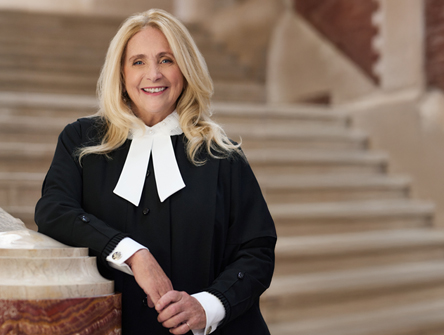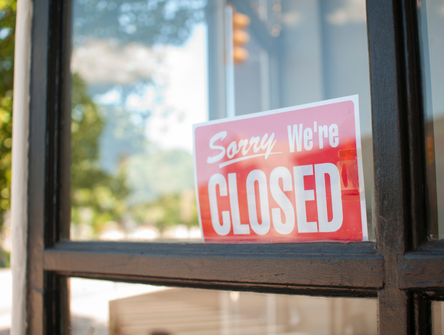Jeff Beedell on what to expect from the SCC in 2019
The court-watcher discusses notable decisions from 2018, and what they say about the pattern of dissent taking shape on Wellington Street.

We recently sat down with Jeff Beedell, a partner in Gowling WLG’s Ottawa office whose practice provides Supreme Court of Canada agency services. In a recent interview with CBA National, he gave us a preview of what to look out for in the coming year at the SCC.
CBA National: It’s been roughly a year since Richard Wagner has taken up the role Chief Justice. What are your impressions and takeaways so far?
Jeff Beedell: One impression is that there’s been a healthy contribution of dissenting opinions written in the first year of Chief Justice Wagner’s leadership. Everyone acknowledges Justice [Suzanne] Côté as our new ‘great dissenter’ but Justices Rowe, Brown, and Gascon also haven’t been shy about expressing independent judicial views. I can’t say if our new Chief Justice marks any change in the pattern of dissents because when I look back at 2017 [the year former Chief Justice Beverley McLachlin retired], we saw the most split decisions in 10 years. Of 67 appeals heard, 36 were unanimous and 31 were split decisions. So, comparing 2018 against 2017, I don't know that there’s any new trend to describe other than that we have a good bench of independent legal thinkers.
N: Is that a good thing or a bad thing to have a little more dissent on the Court?
JB: That’s a good question. I don't know that it’s good or bad. The answer may turn on the type of case decided. For constitutional cases — division of powers and Charter cases — it’s more important that there be unanimity. When balancing individual versus state rights or federal-provincial rights, you want to see more certainty coming from the Court. In other areas of the law it may be less important. And dissents can give heart to those that have alternative views of where the law should land. As Justice [Ian] Binnie once said, it’s often the vanguard of what was yesterday’s dissent becoming tomorrow’s law. One of the recent dissents that I enjoyed reading was the one by Justice Rowe in the Churchill Falls ruling that came down in November. He wrote a very courageous dissent, because he was alone on it, about the evolving legal concept of relational contracts, and interpreted Hydro Quebec’s 65-year contract as giving rise to a higher obligation of good faith. He would have required Hydro Quebec to renegotiate what were extraordinary profits that it was taking from the project. And he overcame the limitations period problem that the majority saw by characterizing this as a continuing breach. It’s a good example of a dissent looking at the law from a different perspective.
N: What were the notable decisions in 2018?
JB: The Trinity Western University decision, the last from Chief Justice McLachlin, stands out. The Mikisew Cree First Nation decision on the duty of the government to consult at the legislative phase was significant to Aboriginal law. For lawyers, I think we were all interested in the Groia decision Probably of less interest to average Canadians but nevertheless important to the role and conduct of lawyers in the courtroom. The “Free the Beer” decision in Comeau also stands out as a significant decision in 2018.
N: And so what are the key rulings on your radar in 2019?
JB: The ‘big billy goat’ will be the Bell/NFL/Vavilov trilogy on standard of review that revisits the Dunsmuir decision. The Court set some pretty great expectations when they granted leave and directed the parties to make lengthy submissions on standard of review. They then appointed two amici curiae and allowed 27 interveners. In the courtroom there were lawyers seated from the front counsel tables back two rows deep in the public gallery ready to make submissions. So much went into it those three days of hearings, one hopes the answer that will stand the test of time. But it wasn’t clear to me watching the hearing that there was an obvious consensus on the bench.
N: Is it realistic to think that they can agree on a clear formula?
JB: I’m not sure that it is. What was apparent from the hearings is that there’s a wide spectrum of administrative tribunals in Canada. And coming up with a single simple test that works in all situations is a big challenge. The reason the courts have struggled with standard of review is because it’s a problem that has a lot of different shades to it. So, I think we’re going to end up with some variation on Dunsmuir, but like Dunsmuir, we’ll see new wrinkles appear.
N: What are some of the other big decisions on reserve?
JB: There were three class actions that were heard in the fall term. From British Columbia, the Pioneer and Toshiba were heard together regards competition law claims by a proposed class of direct/indirect purchasers and ‘umbrella’ purchasers. From Ontario, Wellman vs TELUS is about the impact of arbitration clauses on business customers, as opposed to consumer customers. And from Quebec, there’s a case l'Oratoire Saint-Joseph involving historic claims of sexual assault and the appropriateness and timeliness of a class proceeding. The class action bar will be waiting on these. Then from last winter, the Orphan Well Association v. Grant Thornton appeal is one that the oil patch is watching, as are the Alberta Energy Regulator and receivers and trustees under the Bankruptcy and Insolvency Act. It’s a division of powers contest between the federal bankruptcy legislation and the Alberta regime that deals the abandonment and reclamation of a large number of oil and gas wells.
N: Which hearing holds the most interest for you?
JB: I’m looking at three appeals that will be heard in the winter session that are of particular interest. The first one will be heard on January the 23rd. It’s Nevsun v Araya, an international law case brought by Eritrean refugees against a B.C. mining company, which is allegedly involved, through a chain of subsidiaries, in a commercial mining venture with the government of Eritrea. The Eritrean refugees claim to be victims of forced labour, slavery, torture and crimes against humanity. It’s different but reminiscent of the Chevron case with the Ecuadorian mining companies. The question is where does jurisdiction lie for Canadian courts to deal with allegations like crimes against humanity committed outside of our borders.
The second I’m watching is Keatley Surveying v Teranet, coming out of Ontario. It’s a class action where the court is asked to interpret whether Section 12 of the Copyright Act transferred copyright to the province in all the surveys that Ontario surveyors deposited to land registry over the years. There’s a lot of interest in it, because there are implications in terms of how information gets scanned and put onto databases and then gets commercialized, and whether or not original creators have or haven’t retained copyright.
And then the last hearing of special interest is Attorney General of Newfoundland and Labrador v Uashaunnuat, which concerns an Innu Nation that brought suit against private mining entities for breach of their asserted but not yet proven Aboriginal rights based on ancestral use of lands. Since these lands straddle the Quebec and Newfoundland and Labrador border, the Government of Newfoundland and Labrador has moved to strike the claims that the Innu Nation has brought in the Quebec courts to the extent that any affect activities or land on the Labrador side of the border. So far the Quebec Superior Court and the Quebec Court of Appeals were unmoved and accepted jurisdiction on the basis of real and substantial connection. This case is significant as that no doubt there are other pending Aboriginal claims, which, on a nation-to-nation basis, don’t stop at the border between provinces and/or territories.


